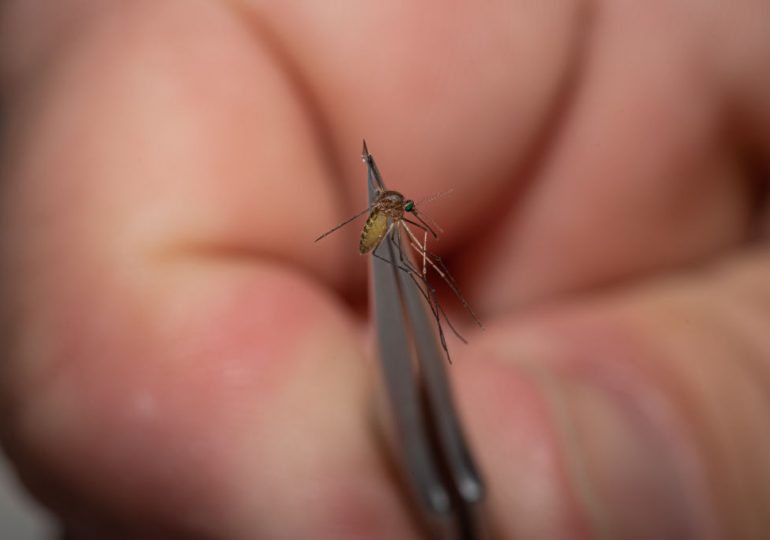Concerns about the dangers of mosquito-borne viruses are on the rise after the first New York resident to contract eastern equine encephalitis (EEE) since 2015 died last weekend, New York Gov. Kathy Hochul announced on Monday.
[time-brightcove not-tgx=”true”]
“Eastern equine encephalitis is different this year. While we normally see these mosquitoes in two to three counties each year, this year they have been in 15 counties so far, and scattered all over New York State,” said State Health Commissioner James McDonald in a press release on Monday. “This life-threatening mosquito-borne disease has no commercially available human vaccine and must be taken seriously. Mosquitoes, once a nuisance, are now a threat.”
The virus, which is contracted through the bite of an infected mosquito, has been on the rise across the Northeast, prompting Massachusetts coastal towns to shut down parks and playgrounds to better protect residents amid concerns about the deadliness of the disease. Some 30% of people who have a serious case of EEE die, according to the Centers for Disease Control and Prevention (CDC), though that number can be even higher in some years.
“The peak time for when these cases are going to be seen is right now, July through September,” says Erin Staples, CDC medical epidemiologist.
In 2024, only 10 people were infected with EEE, though the data was last updated on Sept. 17 and does not yet include the New York case.
What is EEE?
Eastern equine encephalitis virus is a rare disease that is transmitted by various species of mosquitoes. Experts say that while cases are few and far between, and most people who contract the diseases are asymptomatic, the most severe cases can prove fatal.
“In individuals who do survive eastern equine encephalitis, we often do see folks go on to have virologic deficits longer term. So [it’s] definitely one of our more severe arboviral infections,” says Jennifer White, director of the Vector-Borne Disease Program at the New York State Department of Health.
Read More: Why Mosquitoes Are So Dangerous Right Now
The virus causes inflammation in the brain that can then cause an onset of other symptoms, including fever, headaches, vomiting, weakness, etc., according to Staples. In more serious cases, people can also experience seizures and go into a coma.
Because EEE is a virus, there is no treatment for those infected. And unlike other mosquito-borne viruses, eastern equine encephalitis virus can affect people of all age groups.
Experts emphasize that it’s even more important to be cautious because the virus has no treatment. “With viral diseases that are transmitted to people, either through the bite of a mosquito or tick, there is not a specific medication, or antiviral,” says Staples. “The doctor may prescribe for more subtle symptoms…[but] with severe illness like eastern equine encephalitis, people will need to be hospitalized, and the healthcare system and doctors will help provide supportive care to try to get them through the acute illness.”
Why is EEE more common in the Northeast?
EEE is found in mosquitos that live in fresh, hard water swamps along the Northeast, but it’s also seen across the Midwest, coastal regions on the East, and the Gulf Coast.
New Jersey, Massachusetts, Rhode Island, New Hampshire, New York, Vermont, and Wisconsin have all reported cases of EEE this year.
Staples says it’s hard to predict when arboviral diseases are on the upswing because the spread of the disease can depend on multiple factors, including the diseases’ spread to other animals like birds and horses. The highest number of cases ever recorded in one year was 38 in 2019, according to an article published in the National Library of Medicine Journal.
“If there’s less water, more water, hurricanes, or other things, that can obviously affect the ecosystem which birds live in. The CDC worked with New Jersey several years ago to look at why things had changed in terms of their EEE, and some of it was human use patterns and changing ecology which influenced where the virus would be located,” says Staples.
How to protect yourself from EEE
The CDC is encouraging people to listen to their local and state officials in order to best protect themselves from EEE.
In New York, Hochul called on state agencies to increase access to bug repellent across state parks and facilities, as well as increase public outreach about the disease. Local health departments in the state are also expected to decrease park hours during what they consider peak hours of mosquito activity. White says that officials are especially concerned about EEE this year because there have been reports of the virus in mosquitoes, emus, and horses across 15 counties. “What sort of made this year unprecedented is the geographic range we’re seeing EEE in this year,” says White. “That has everyone’s concern level raised a bit, and we’re also seeing high levels of West Nile virus—we’re seeing more human cases than we have before.”
The best way to protect yourself is by protecting your skin to avoid getting bitten. “That would mean things like wearing long sleeves, long pants at dawn and at dusk, when mosquitoes tend to be most active,” White says, while also mentioning the importance of wearing bug repellent. Staples adds that people should make sure they use EPA-recommended brands and check that their window screens are intact. Since water attracts mosquitoes, avoiding still water in your backyard is also pivotal.
“You just basically want to make your property, and any place with standing water, are inhospitable to mosquitoes,” says Staples. “If you have a bird bath, overturn that before mosquito larva gets a chance to develop into adults.”
“We’re not telling individuals not to be outside, but if you’re going to be outside to take steps to prevent you from getting a mosquito borne illness, protect yourself from mosquito bites whenever possible,” she adds.
Leave a comment



